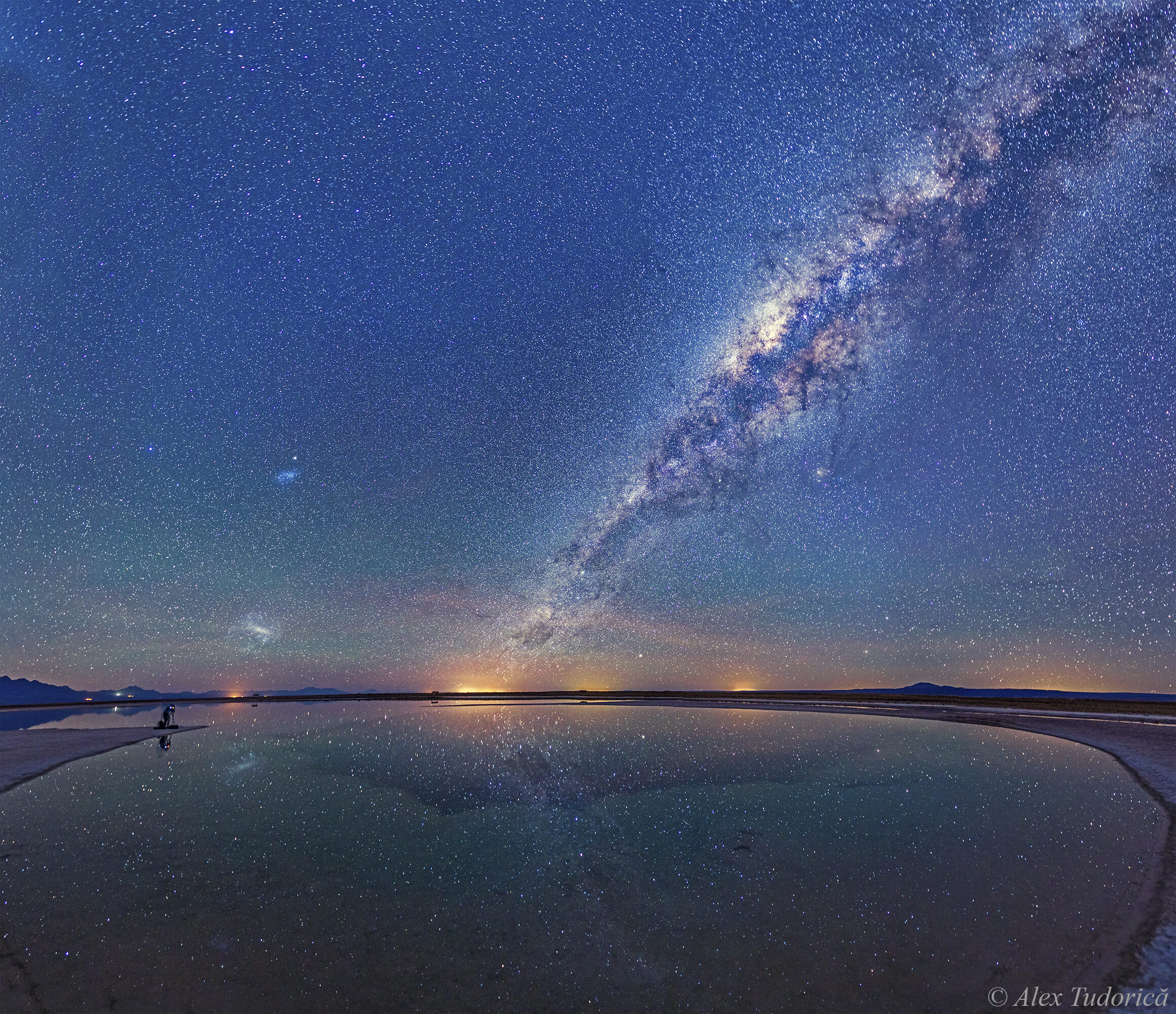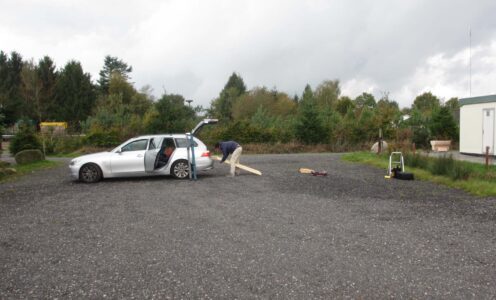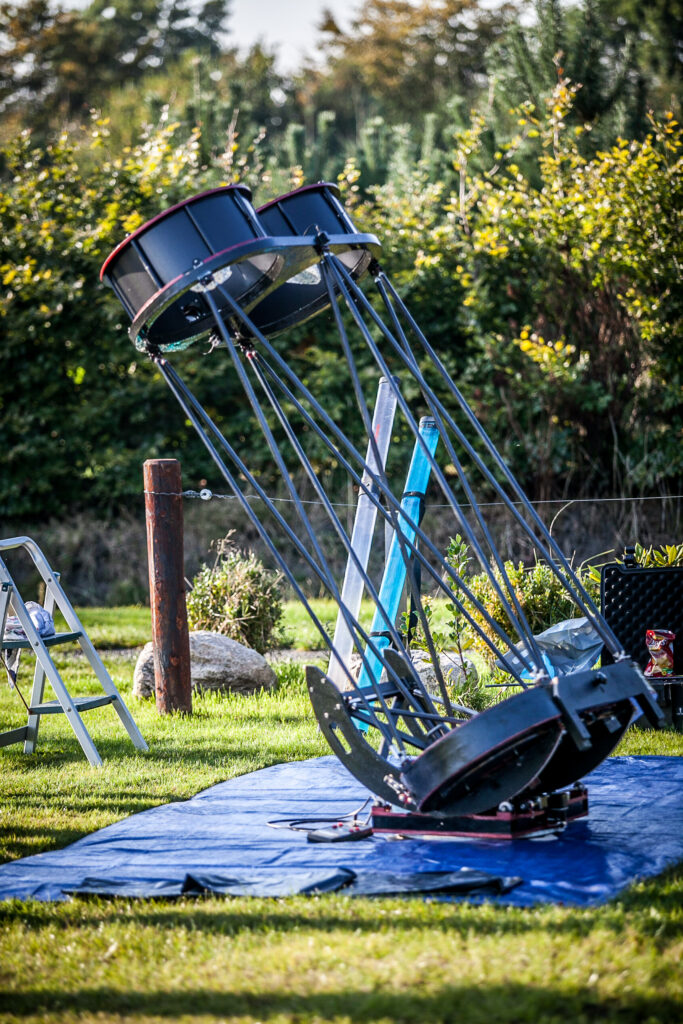<<<<The Build (4)
Second try
After solving the problems with the trusses, making the binoscope transportable and naming it Red Eye, I made a second attempt at first light during a starparty in the north of the Netherlands. Since I made the changes to the trusses, I had not setup the binoscope, so the entire procedure of getting the scope out of the car and setup was a bit of a test.

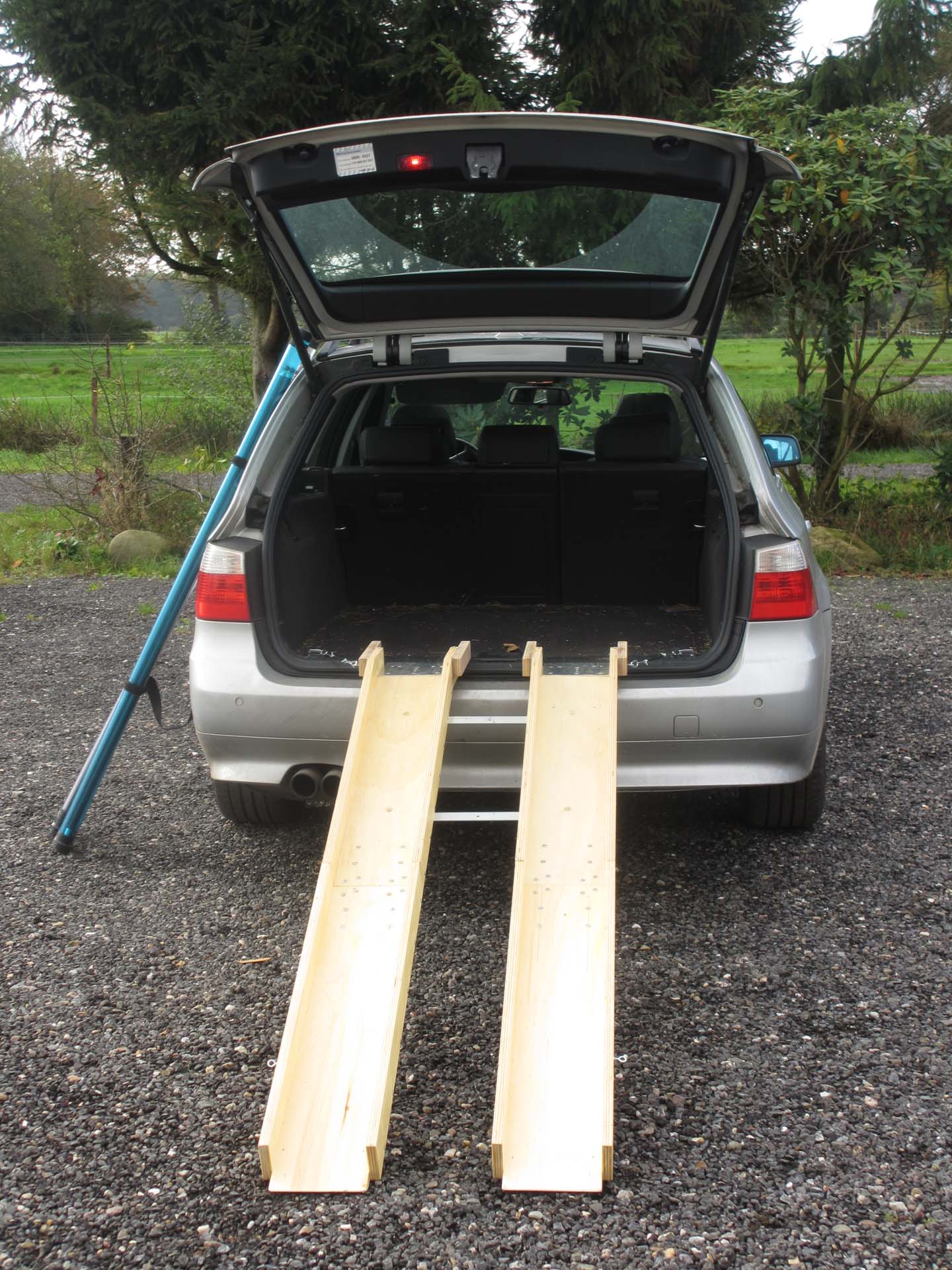
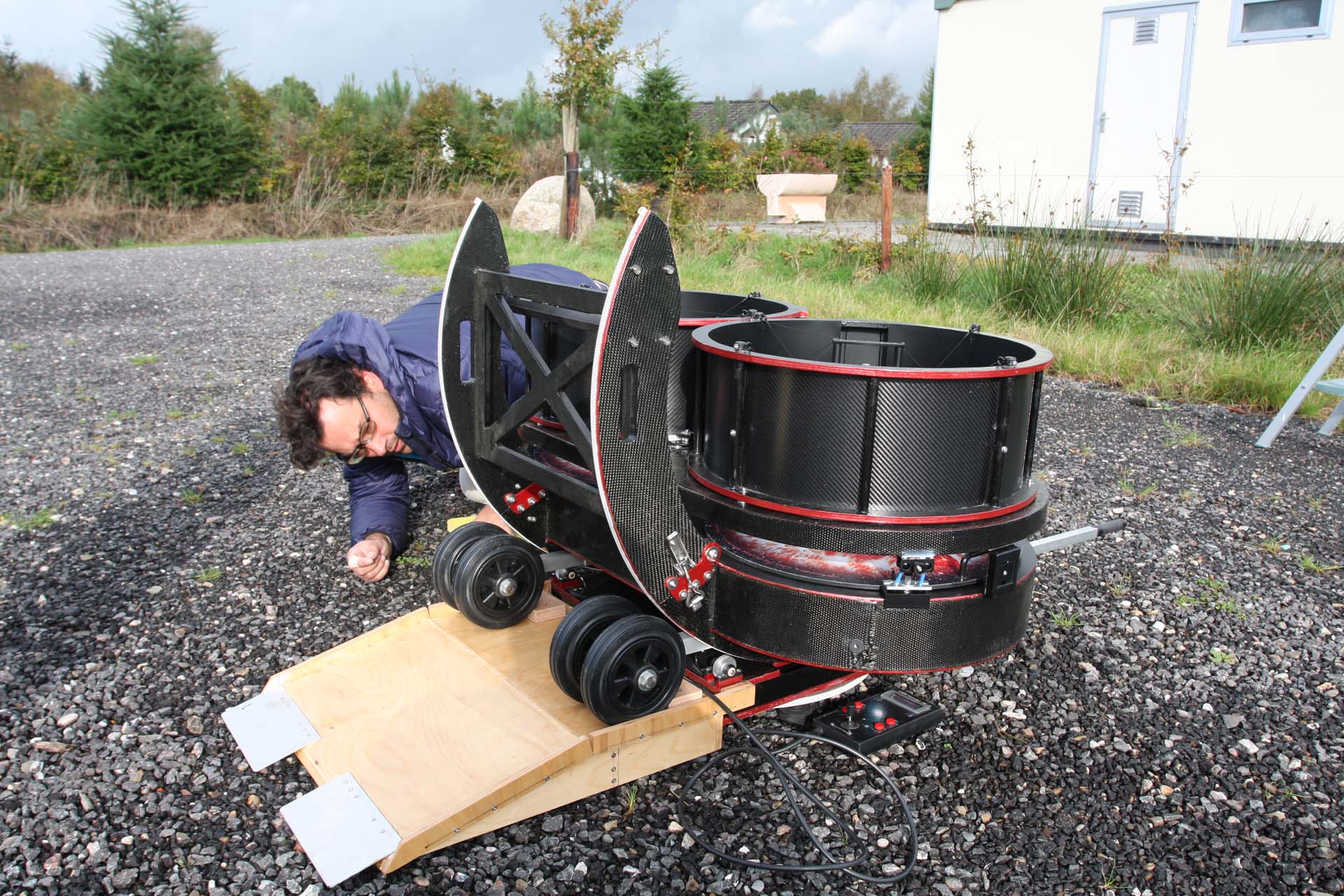
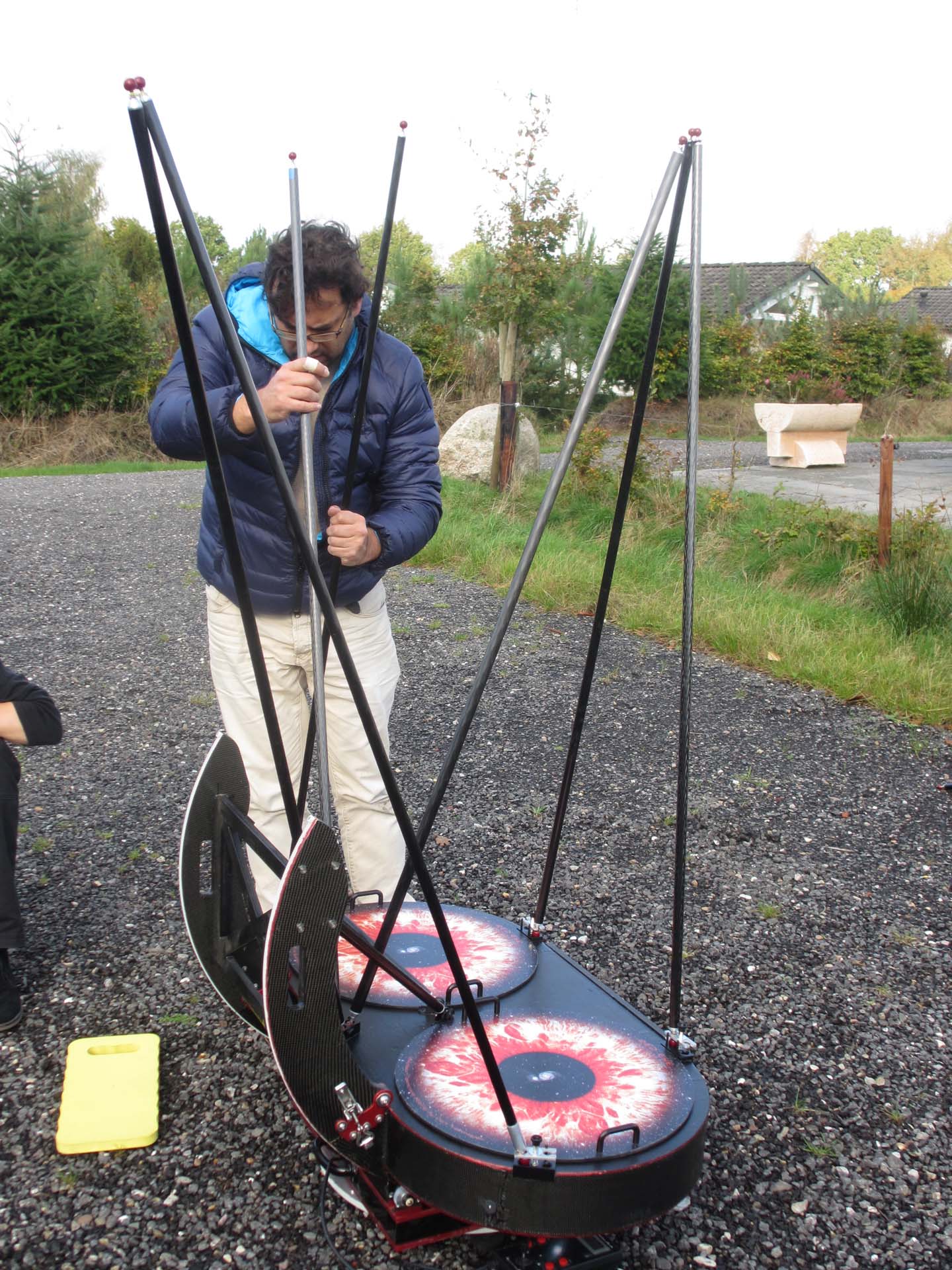
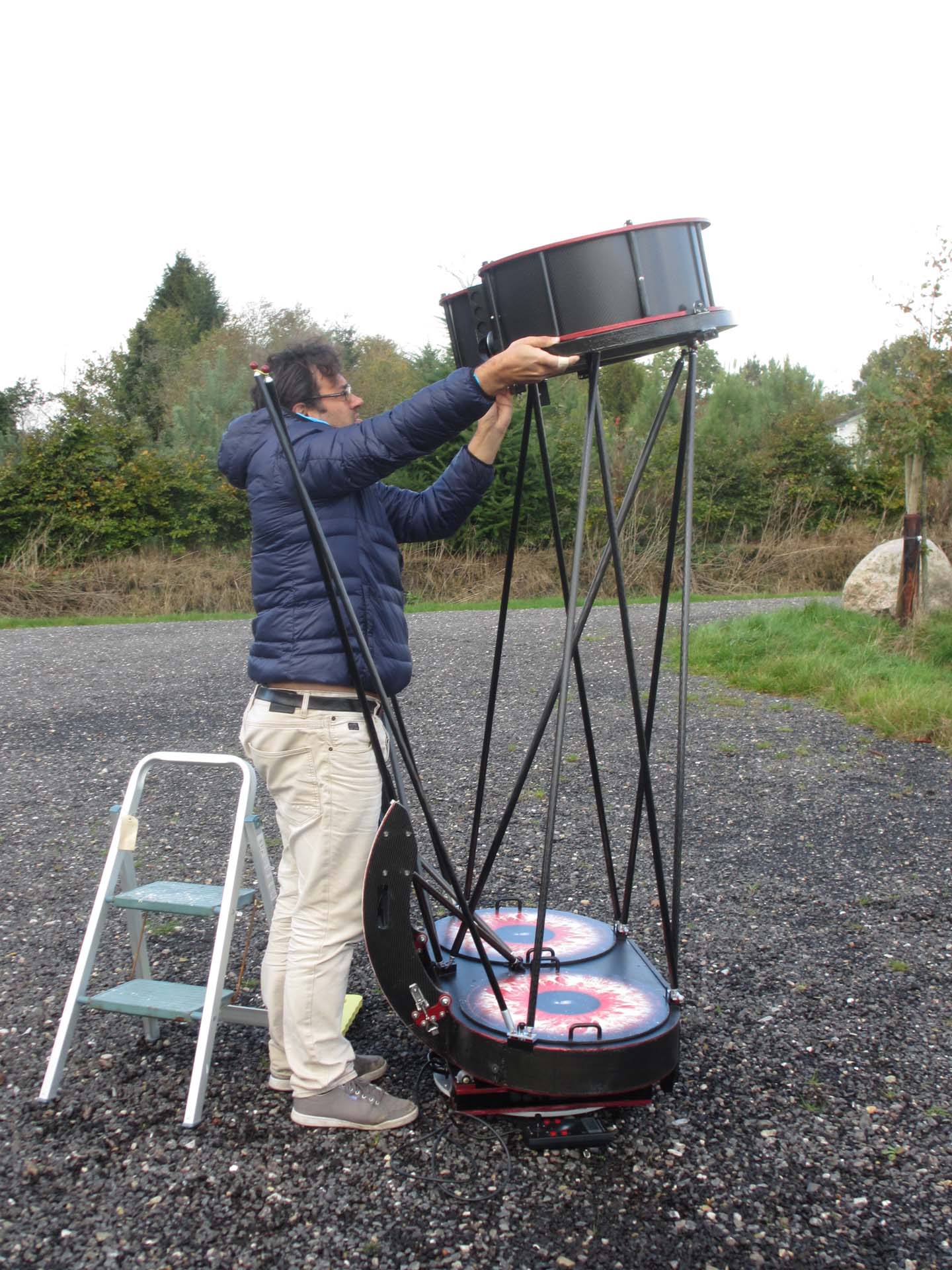

I was a little bit relieved that I got the binoscope put together. But I still needed to testrun it. The main issue was positioning the secondary rings, which is easy when have 6 or 8 trusses. 11 trusses is tricky. Fortunately there where a lot of experienced amateurs at this starparty who were kind enough to sharre their ideas and help out.
Testing the goto control revealed that the altitude motor setup needed some work, but a little workaround made it possible to try a few observations. But when the clouds subsided a little and we finally got to pointing the scope at something, I couldn’t get any of my eyepieces to focus.
In a periode of 5 years I made a lot of calculations during the design and building of this binoscope and I guess I got a bit lucky that most of them were spot on. But I had made a rather crucial mistake that threw a spanner in the works at this starparty, I made the trusses over 3 cm too long. So I spend the night tinkering and trying to fix the problem, but eventually gave up and got some great views through other people’s telescopes.
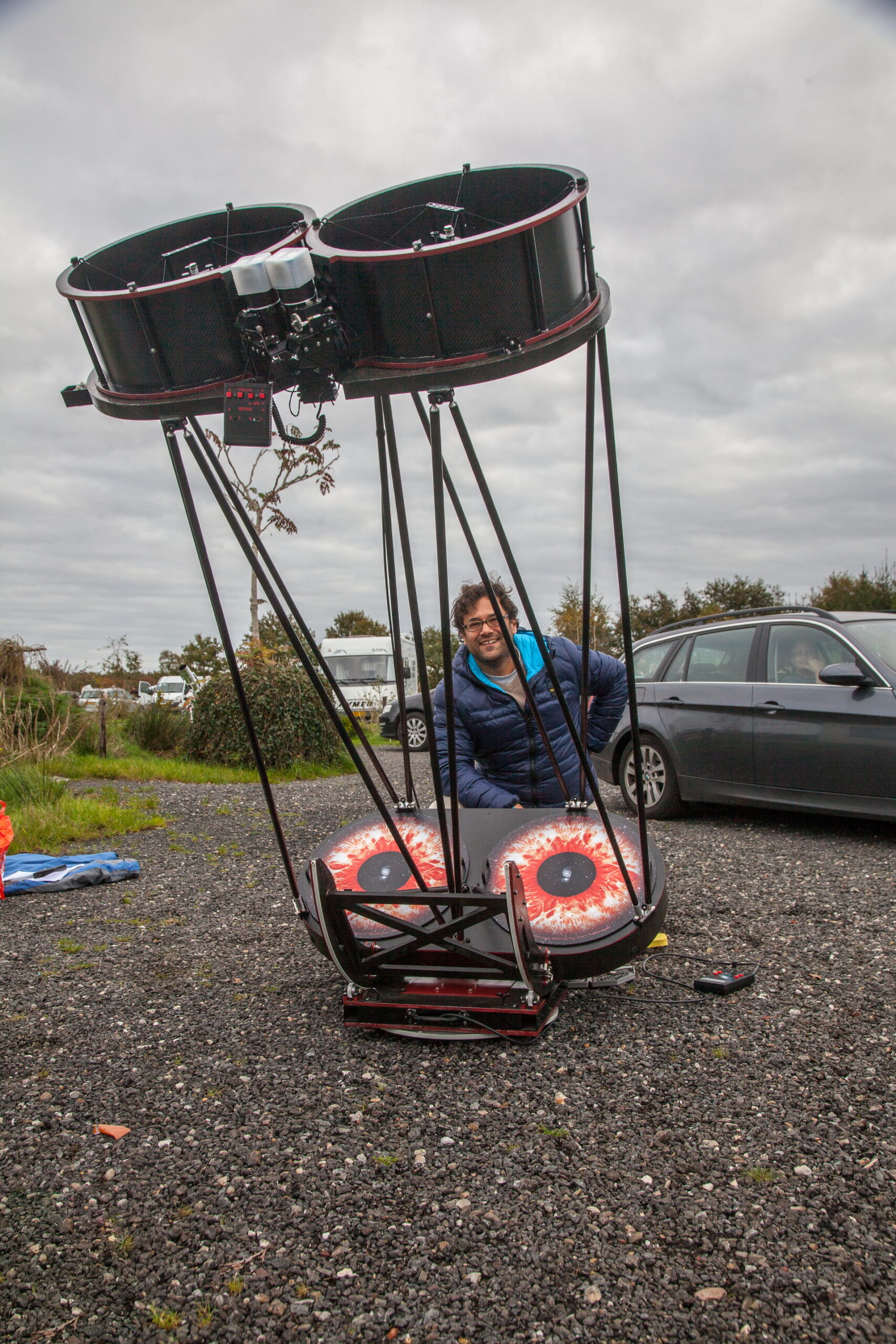
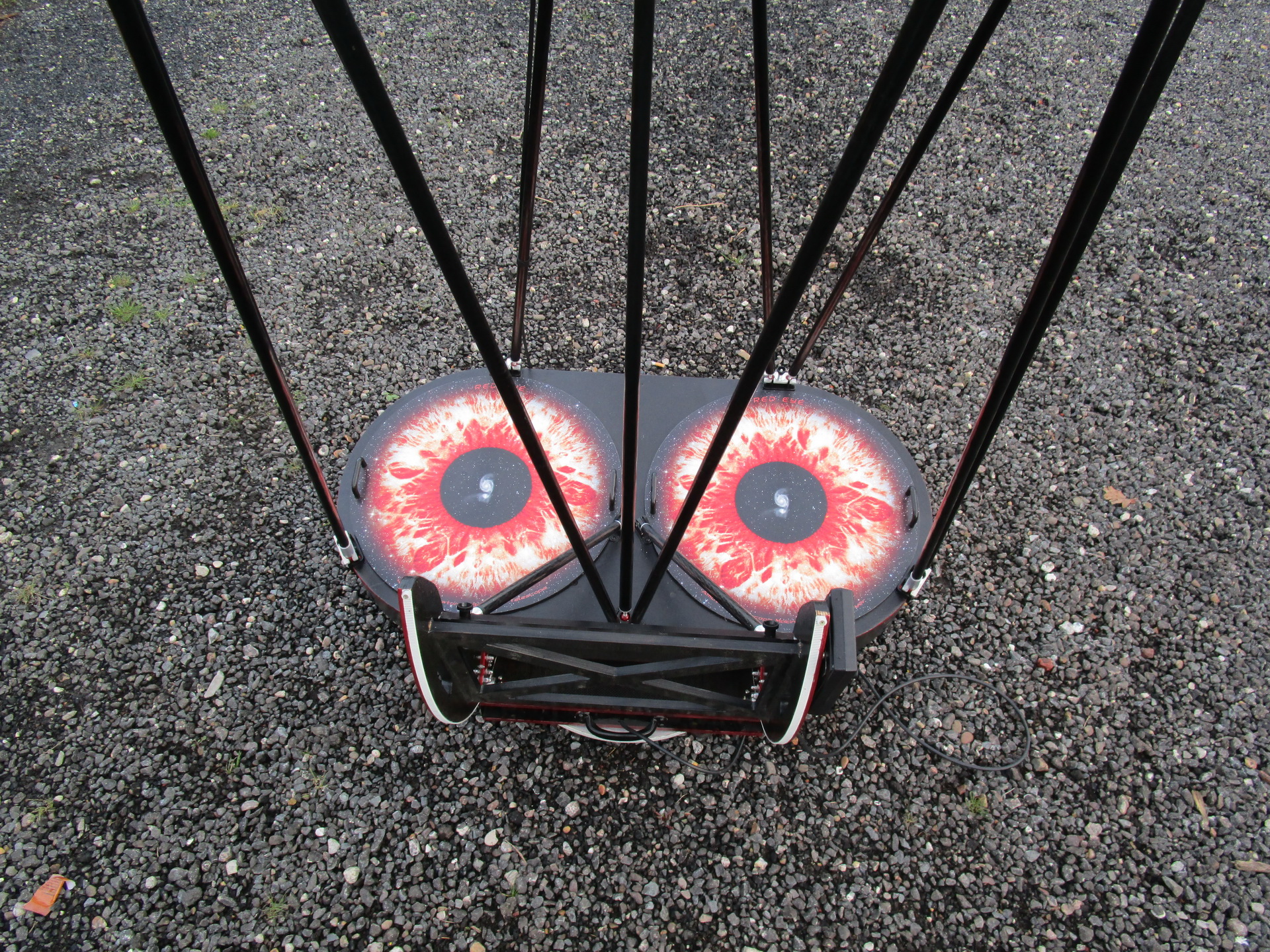



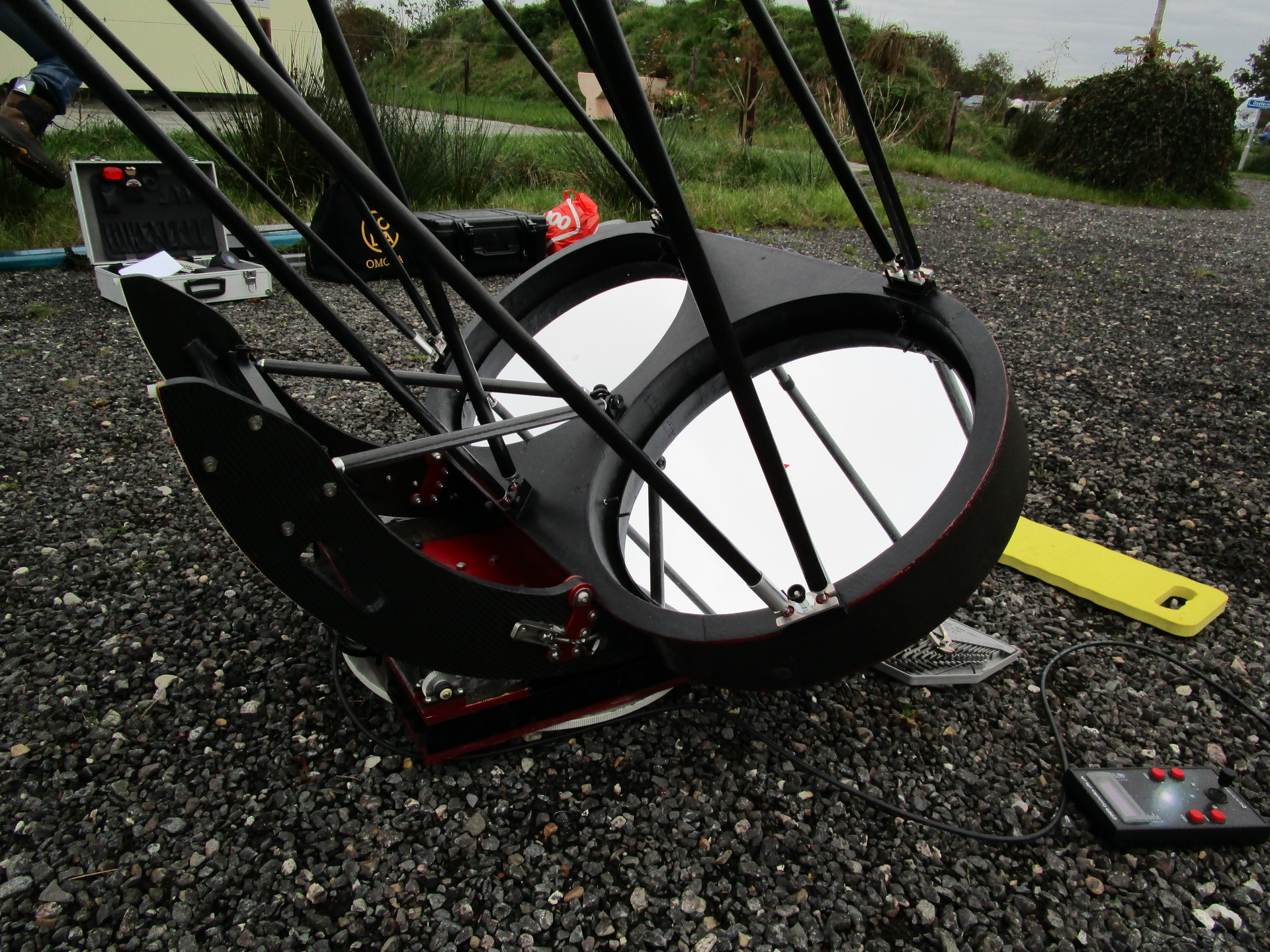

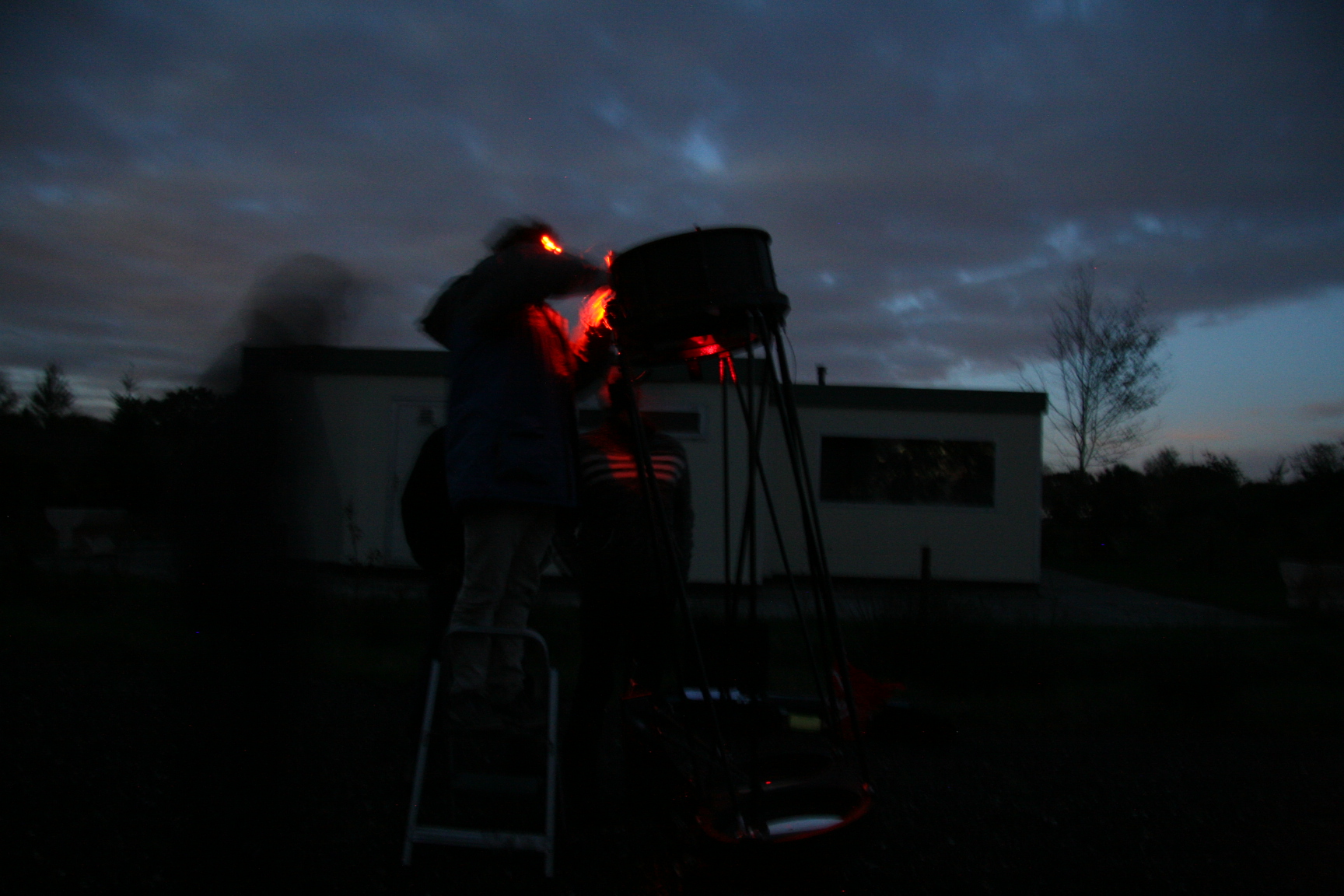
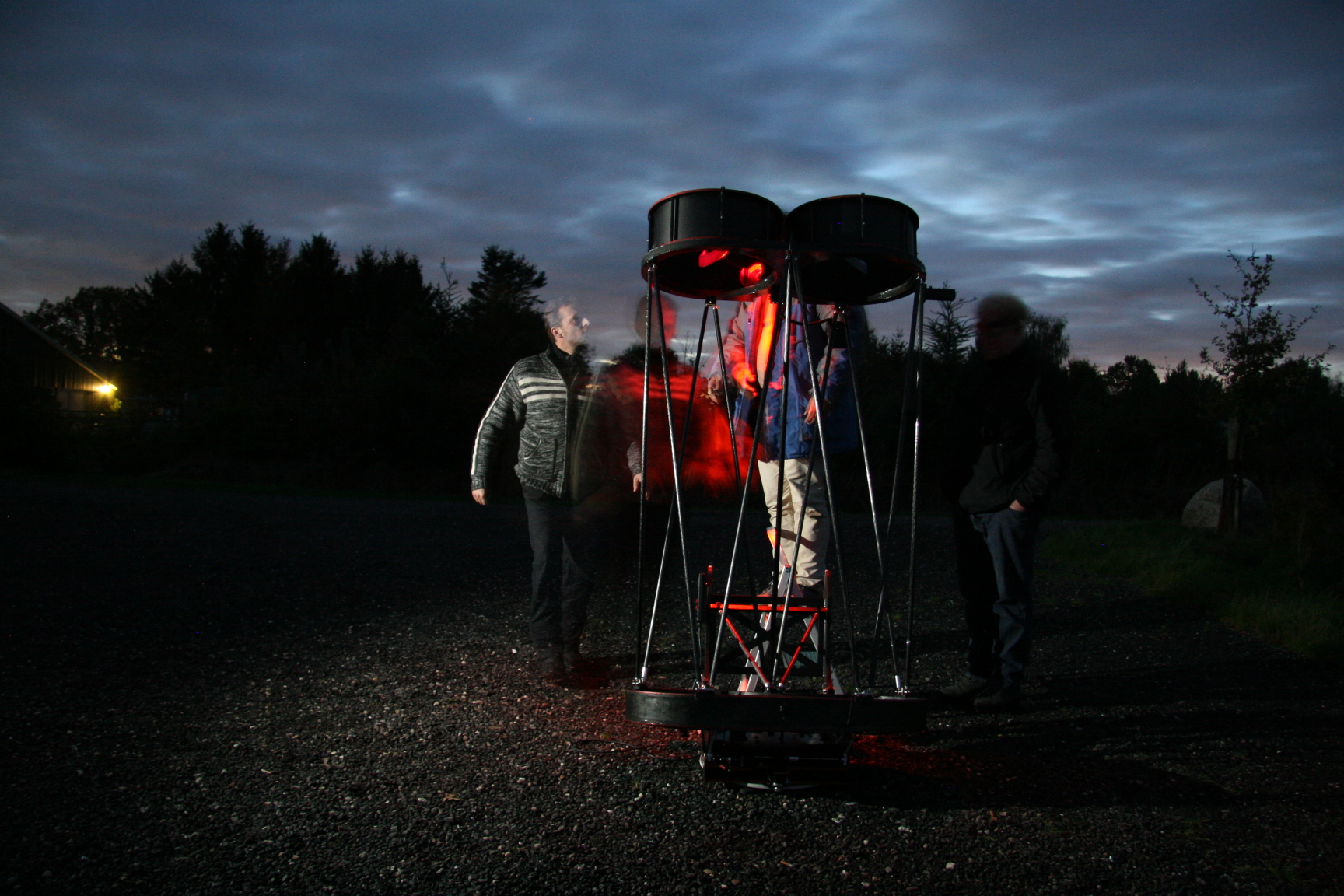
First light
I finally got to some real observing in the spring of 2015. Together with a group of amateurs I spend a night observing under pretty good conditions (Sqm 21.2) at the Afsluitdijk in the Netherlands. It was great to get some feedback from seasoned observers and to try out if the binoscope worked for different people.
Apart from some hiccups that I’ll discuss some more under the header “Upgrades”, the view through a binoscope is everything they say it is. Its a totally different way of looking at the sky. Apart from the obvious spectacle of planets, deep sky objects are also somehow enhanced. M13 and M92 for instance showed a lot more fine detail than in my single 45 cm. Other objects just seem different, positioned like they are within grasp. Low magnifications adds a new dimension to certain objects, like the Leo triplet. When looking at M57 it was clear that this is a much more powerful instrument than my old telescope. I could easily make out the central star without using averted vision.
All in all the binoscope was definitely worth the effort, even though I need some major upgrades to make it a really practical telescope.
Upgrades
Yes, the binoscope definitely needs some upgrades. Some of them are even a precondition to it becoming a usable instrument.
- I need to improve the way I transport the binoscope, especially since I have got a new car with a slightly narrower boot.
- Setup time needs to be shortened, it now takes me up to 30 minutes from arriving to a complete setup. I’ve concluded that there is no quick fix to get this number down. Its down to changing a lot of little things.
- The altitude bearings run on timing belt pulley’s that in turn run on Igus bearings. These bearings have to much friction for this telescope (they work great on my 45 cm string telescope). This causes the altitude motor to stall or skip.
- The Goto controller has to be reprogrammed with the right parameters. Right now the telescope is tracking but not getting to the right objects.
- The merg motor setup needs improving. The couplings between the motors and the collimation bolts are too weak.
- I need to improve the rotating top. The rotation is not consistent. Changing observers usually means tweaking the image with the mergmotors.
- The binoscope needs several shrouds to block light.

